Tin Myat Htwe
Parsing of Myanmar sentences with function tagging
May 08, 2012
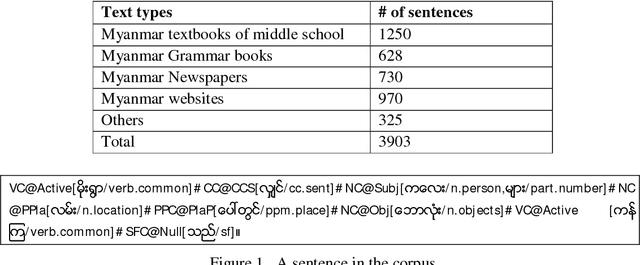
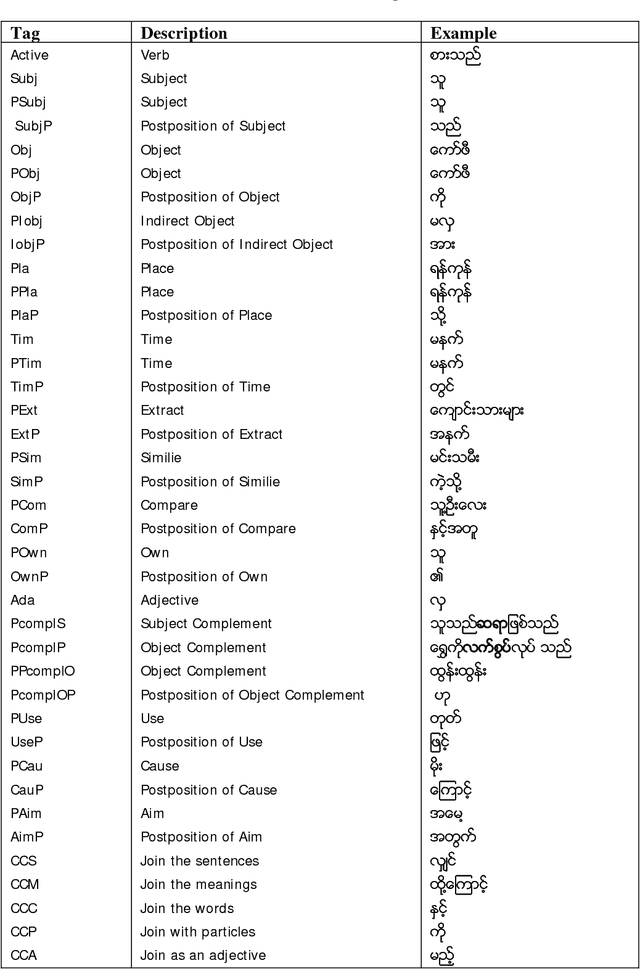
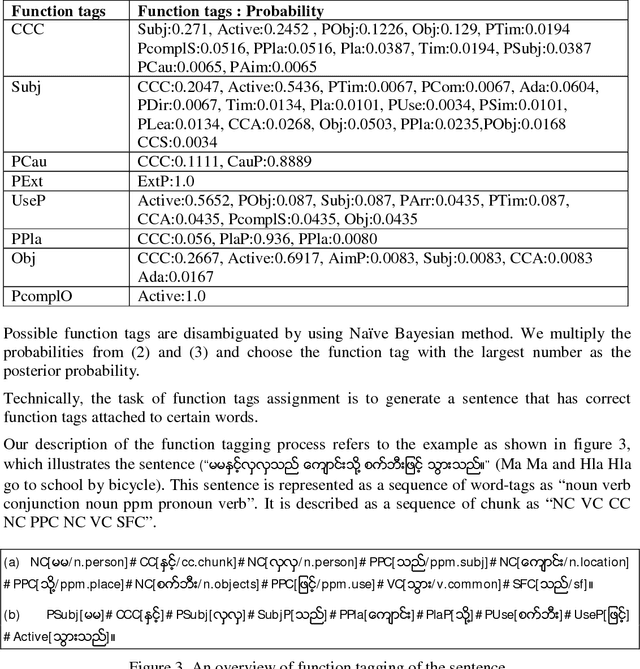
Abstract:This paper describes the use of Naive Bayes to address the task of assigning function tags and context free grammar (CFG) to parse Myanmar sentences. Part of the challenge of statistical function tagging for Myanmar sentences comes from the fact that Myanmar has free-phrase-order and a complex morphological system. Function tagging is a pre-processing step for parsing. In the task of function tagging, we use the functional annotated corpus and tag Myanmar sentences with correct segmentation, POS (part-of-speech) tagging and chunking information. We propose Myanmar grammar rules and apply context free grammar (CFG) to find out the parse tree of function tagged Myanmar sentences. Experiments show that our analysis achieves a good result with parsing of simple sentences and three types of complex sentences.
Statistical Function Tagging and Grammatical Relations of Myanmar Sentences
Mar 08, 2012
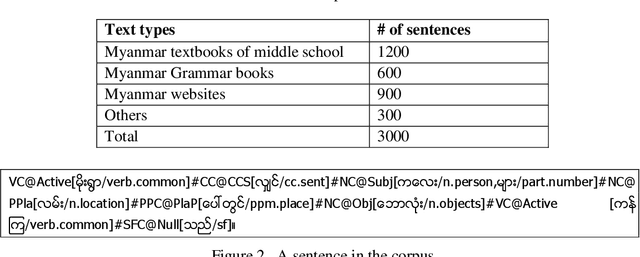
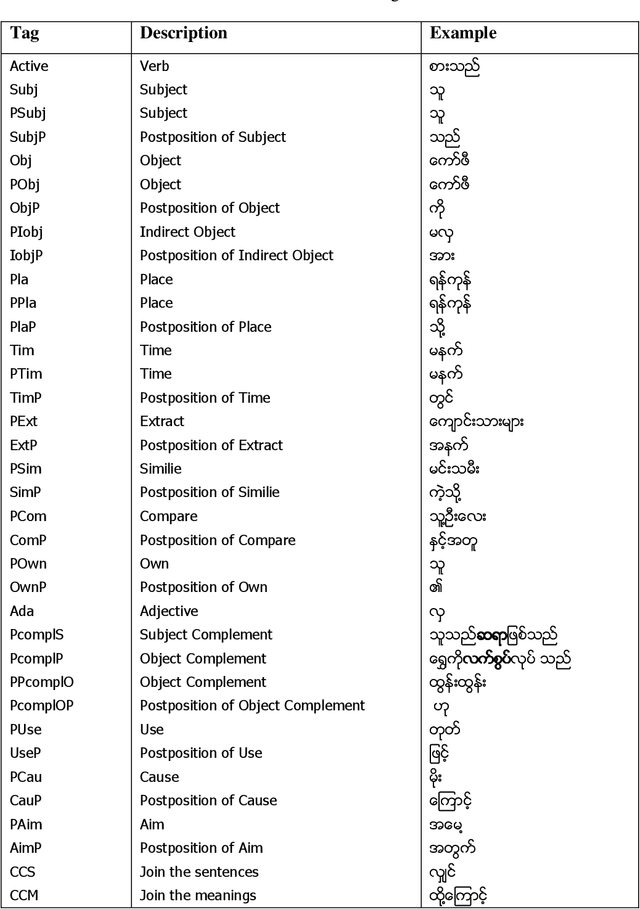
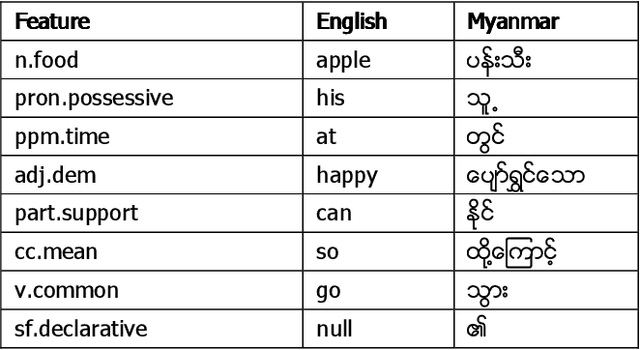
Abstract:This paper describes a context free grammar (CFG) based grammatical relations for Myanmar sentences which combine corpus-based function tagging system. Part of the challenge of statistical function tagging for Myanmar sentences comes from the fact that Myanmar has free-phrase-order and a complex morphological system. Function tagging is a pre-processing step to show grammatical relations of Myanmar sentences. In the task of function tagging, which tags the function of Myanmar sentences with correct segmentation, POS (part-of-speech) tagging and chunking information, we use Naive Bayesian theory to disambiguate the possible function tags of a word. We apply context free grammar (CFG) to find out the grammatical relations of the function tags. We also create a functional annotated tagged corpus for Myanmar and propose the grammar rules for Myanmar sentences. Experiments show that our analysis achieves a good result with simple sentences and complex sentences.
Grammatical Relations of Myanmar Sentences Augmented by Transformation-Based Learning of Function Tagging
Dec 02, 2011



Abstract:In this paper we describe function tagging using Transformation Based Learning (TBL) for Myanmar that is a method of extensions to the previous statistics-based function tagger. Contextual and lexical rules (developed using TBL) were critical in achieving good results. First, we describe a method for expressing lexical relations in function tagging that statistical function tagging are currently unable to express. Function tagging is the preprocessing step to show grammatical relations of the sentences. Then we use the context free grammar technique to clarify the grammatical relations in Myanmar sentences or to output the parse trees. The grammatical relations are the functional structure of a language. They rely very much on the function tag of the tokens. We augment the grammatical relations of Myanmar sentences with transformation-based learning of function tagging.
 Add to Chrome
Add to Chrome Add to Firefox
Add to Firefox Add to Edge
Add to Edge